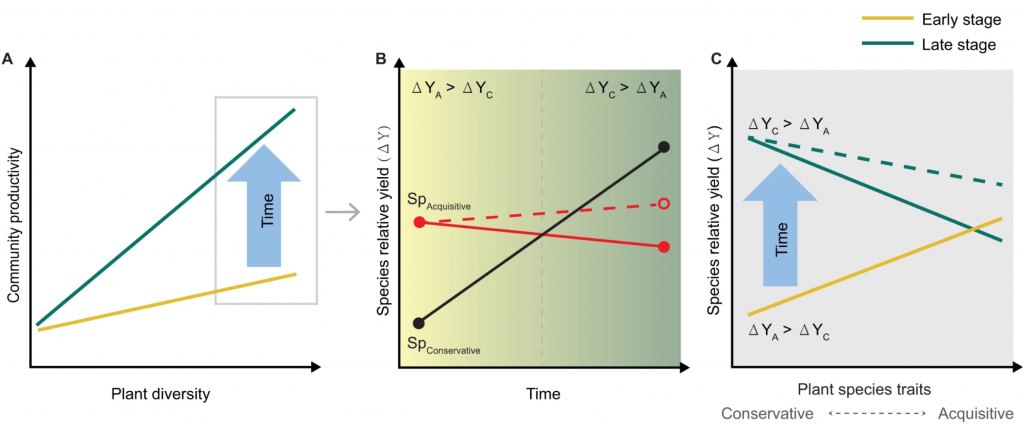New publication from Zheng et al. in Nature Communications: Effects of plant diversity on productivity strengthen over time due to trait-dependent shifts in species overyielding
Plant diversity effects on community productivity often increase over time. Whether the strengthening of diversity effects is caused by temporal shifts in species-level overyielding (i.e., higher species-level productivity in diverse communities compared with monocultures) remains unclear. Here, using data from 65 grassland and forest biodiversity experiments, we show that the temporal strength of diversity effects at the community scale is underpinned by temporal changes in the species that yield. These temporal trends of species-level overyielding are shaped by plant ecological strategies, which can be quantitatively delimited by functional traits. In grasslands, the temporal strengthening of biodiversity effects on community productivity was associated with increasing biomass overyielding of resource-conservative species increasing over time, and with overyielding of species characterized by fast resource acquisition either decreasing or increasing. In forests, temporal trends in species overyielding differ when considering above- versus belowground resource acquisition strategies. Overyielding in stem growth decreased for species with high light capture capacity but increased for those with high soil resource acquisition capacity. Our results imply that a diversity of species with different, and potentially complementary, ecological strategies is beneficial for maintaining community productivity over time in both grassland and forest ecosystems.

Reference:
Zheng, L., K. E. Barry, N. R. Guerrero-Ramírez, D. Craven, P. B. Reich, et al. 2024. Effects of plant diversity on productivity strengthen over time due to trait-dependent shifts in species overyielding. Nature Communications 15:2078. https://doi.org/10.1038/s41467-024-46355-z.


